- Home
- Jane Smiley
The Man Who Invented the Computer Page 4
The Man Who Invented the Computer Read online
Page 4
But Atanasoff was at least in a place where he could gather together the information he needed. Right around the time of the Laplaciometer, he discovered an electronic engineering textbook entitled The Thermionic Vacuum Tube and Its Applications, by Hendrik Johannes Van der Bijl, a South African physicist who had studied in Germany before returning to South Africa to design the national power grid and other state-sponsored enterprises. According to Burton, after reading Van der Bijl’s book, Atanasoff built some vacuum tubes on his own and began to think about novel ways he could put them to use.
A simple vacuum tube, called a diode, works like an incandescent lightbulb: a filament, called a cathode, is heated and then releases negatively charged electrons, which stream toward a positively charged metal plate, called an anode. The mechanism is enclosed within a tube of glass, which preserves the vacuum and disperses the heat generated by the filament. Numerous improvements in the diode were made throughout the beginning of the twentieth century, mostly for the purpose of improving radio design, reliability, and transmission. In 1936, the vacuum tube was used in radios to amplify transmission and reception of signals, and tubes continued to be used in radios and televisions until the invention of the transistor. The tubes were delicate and expensive to operate because of energy loss through the glass shell. But Atanasoff didn’t want his tubes to do much—he just wanted them to turn on and off. The measurement required by an analog calculator would be replaced by counting. Since this is similar to the way a child counts on his fingers, this came to be known as digital calculation.
The difference between measuring and counting, for Atanasoff’s purposes, was enormous: counting is precise, infinite, and as portable as an abacus. No quantities such as distance are involved, and no estimation needs to be made (as it does, for example, when the mark giving the result of a slide rule calculation falls between two marks indicating numbers). However, counting had its problems, too, since it is repetitive and mind-numbing. And for most of those attempting to invent the computer, the problem was that they themselves were used to counting in a base-ten (0–9) number system; there was no way to invent a simply constructed calculator that could do that. It is probably also true that the more that the inventors made use of mechanical calculators such as the Monroe, the more the idea of base-ten counting was reinforced, since a Monroe calculator consisted of a hundred black and white keys arranged in a ten-by-ten grid (using the digits 0–9), with red function keys set in two rows, across the bottom and down the right side as the operator faced the machine.
As a young man with a wife and young children, Atanasoff was busy at home as well as at school. Although faculty salaries were cut in the early 1930s as a result of the Great Depression, Atanasoff managed to get promoted quickly and to save up enough money to buy ten acres on Woodland Street, which runs due west from the ISU campus. He chose a plot for himself, designed a brick house, and oversaw its construction, moving his family into the basement in the summer after the February 1935 birth of his third child, a son named John Vincent II. Since Atanasoff believed in pay-as-you-go, progress on the house depended on ready cash. As a result, the family lived in the basement through the winter of 1935–36, protected from the cold and snow at times only by tarps and the floorboards of the partially constructed ground floor. Lura cooked in the laundry room. Atanasoff himself installed the electricity and plumbing, as well as the heating system for the baby’s room.
Shortly after the house was completed, Elsie, the older daughter, aged eight, became seriously ill with asthma and allergies. According to Burton, the standard treatment of the day, adrenaline shots, had a negative effect on Elsie’s condition, so Atanasoff threw himself into reading about allergies and observing his daughter. He decided that she was allergic to cow’s milk, chocolate, and wheat, and he bought two pregnant female goats, which Lura cared for and milked in the backyard of the Woodland Street house. He rigged up a system for circulating fresh air into Elsie’s room and became so knowledgeable about allergies that a local doctor used him as a consultant. His daughters also gave him entrée to the grammar school authorities—when teachers complained that the girls were often late because Atanasoff was dropping them off on his way to the college, he got interested in how the teachers were doing their jobs—investigated how school resources were being used and made suggestions about what the science and math curriculum should look like. When the school nurse suggested that one of the girls have her tonsils removed, Atanasoff lectured her on why they should not be removed. His arguments were always complete and forcefully presented, and school authorities soon learned to leave well enough alone. Once, Burton writes, “when the family’s enormous vegetable garden produced a large crop of soybeans, he immediately addressed the problem of shelling the beans by rigging the washing-machine clothes-wringer to assist in the task. Whole soybeans were hand-fed into the electric clothes wringer and came out shelled on the other side.”
But he worked late at the office, worked at home, and read the newspaper at the supper table. Home, like the office, was an arena for projects and creative thinking, not interaction, familial relationships, or leisure enjoyments—in fact, Atanasoff rather disdained pursuits such as art, music, and literature that Lura enjoyed. Lura understood Atanasoff’s pressing commitment to solving the problem of calculating, both as the inner drive to solve a problem creatively and as an essential scientific task. Burton indicates that Atanasoff’s frustration with the failures of the solutions he and his colleagues were coming up with in the mid-thirties was making him moody and hard to live with, but also that Lura’s own close-knit family of origin had not prepared her for the lonely life she found herself leading. Atanasoff was not happy. He wrote later, “I had been forced to the conclusion that if I wanted a computer suited to the general needs of science and, in particular, suited to solving systems of linear equations, I would have to build it myself. I was leading a full life and had too much to do; I did not want to search and invent, but sadly I turned in that direction.” He feared he would be wasting his best years on an endeavor that might prove fruitless. And he had no way of knowing who was inventing what in the world of computing or how his thinking fit into that of others—even if it worked, his invention could easily be preempted by another.
Like all land-grant universities, Iowa State was provincial and local, and intended to be so. Its obligations were to the state of Iowa, not to the larger worlds of industry or intellect. Atanasoff’s field was physics—he wanted a tool, and the tool was missing. It was characteristic of both his personality and his education that he decided to invent the tool, but it was also realistic on his part to fear that inventing the tool would be a waste of time he could be spending on other projects—his schedule was full and he had no real confidence that he could come up with the solution he sought.
Atanasoff spent 1936 and 1937 reading as much as he could about every calculator then in existence, and also about what other innovators thought possible. He also moved his office from the mathematics department to the new physics building, which was more spacious and more practically oriented. According to Burton, he felt that mathematics as a field was moving in the wrong direction—toward greater and greater abstraction—while physicists continued to be interested in concrete problems. In the meantime, Alan Turing was wrestling with similar dissatisfactions.
Alan Turing’s life at Sherborne was punctuated at the end with tragedy—in the winter of his last year (1930), his dearest friend, Christopher Morcom, died of tuberculosis. Morcom, slightly older and gifted with the star power that eluded Turing, had won many prizes at Sherborne, and then a scholarship to Trinity College. The two young men shared scientific and mathematical interests, and Turing profoundly respected not only Morcom’s intelligence, but also his thoroughness and his broad interests—he could play the piano and he could also do his work legibly without making arithmetical mistakes. Moreover, he was fun—among other pranks, he once sent gas-filled balloons over Sherborne Girls. It may have been Mo
rcom’s positive influence that enabled Turing to get higher marks at Sherborne as he got closer to finishing his education there.
In 1931, Turing won his own scholarship to Cambridge, but to King’s College rather than Trinity. If, at the University of Florida and Iowa State, and even at the University of Wisconsin, Atanasoff was always more or less at the periphery of both the mathematics and physics establishments, at King’s College Turing was at the exact heart, especially of mathematics. He took courses from astrophysicist Arthur Eddington and mathematicians G. H. Hardy and Max Born. He met John von Neumann there—many mathematicians fleeing conditions in Germany and the East passed through Cambridge on their way to settling elsewhere. And it was Max Newman, who was lecturing on topology—the study of relationships between geometric spaces as they are transformed by such operations as stretching, but not such operations as cutting—who introduced him to the Hilbert problem that would make his career. Working on the Hilbert problem was not his first attempt at a dissertation—one professor had suggested he work on the dielectric constant of water, but he got nowhere.
David Hilbert’s Entscheidungsproblem (one of twenty-three famous Hilbert problems) had been proposed by the German mathematician in 1928. In layman’s terms, the Entscheidungsproblem asked if there was or could be a procedure (an algorithm) that could determine whether a mathematical statement was true or false—just the sort of question that no longer interested Atanasoff. To many mathematicians of the period, the Entscheidungsproblem seemed to point toward concepts that were psychological, epistemological, or even theological. Alan Turing’s answer to the problem was no—there was no algorithm that could determine the truth of every mathematical statement. He was preempted by a few weeks by American mathematician Alonzo Church, who was at Princeton. Church’s answer to the question was a logical system called lambda calculus. Turing’s answer was a different sort of act of imagination, and he came to it in a manner similar to Atanasoff’s revelation—he set out on a cross-country run along the river Cam. He was an avid and fit runner who occasionally ran north as far as Ely, some twenty miles from Cambridge. One day, resting in a meadow after a long run, he imagined a procedure, or set of instructions, so simple that a machine could perform it, if the machine could operate eternally.
In the paper he wrote about this idea, Turing describes the psychological process of making a simple but arduous calculation. He imagines that the person making the calculation is given a set of instructions, and if she follows the set of instructions every time she sits down to her work, her mind will always work in the same way, and she will make no mistakes in her calculation (though the work, of course, will be unbelievably tedious). Turing soon makes the leap from the set of instructions to the notion of an ideal machine—it would operate on its own, without human input. It would perform a set of operations forever, and the operations would be clearly defined and of a limited number. As his example, he described a machine that is fed an infinitely long tape. The tape is divided into squares, and each square either has a mark on it or is blank. As the machine scans each marked square or each empty square, it is instructed to perform an operation—to put a mark in an empty square, to erase a mark in a marked square, to shift one space to the right, or to shift one space to the left. When each operation is completed and the machine has moved on to the next instruction, it now scans the new square and performs the instruction for that square. However, the machine does not treat every mark and every blank in exactly the same way—the set of instructions progresses as the calculation progresses. This progression Turing called “the table of behavior.” We would call it the program. Eventually, the machine arrives at the end of the calculation—for example, it is instructed by the table of behavior to stop after erasing a mark and shifting to the left. This operation denotes that the answer has been arrived at—in the case of an addition problem, the series of marked squares now adds up to the sum of the marked squares defined by the problem.
Turing imagined all sorts of machines set up to solve all sorts of mathematical problems, including those considered impossible to solve. The only things necessary for these solutions would be instructions and time (and a binary number system consisting of marks and blanks). What would define a problem as soluble would be that the machine would progress to the end of the problem. What would define the problem as insoluble would be that the machine would get stuck—a wrong instruction sequence could set up the operation of the machine so that it would simply move back and forth, erasing and re-marking the same two squares. Turing then went on to imagine a comprehensive machine, which he called a “universal machine,” that, given sufficient instructions, could solve every problem that each of the specialized machines could solve. He showed that, given infinite time and instructions, there could be such a machine. The kicker, though, and in this he addressed the Entscheidungsproblem, was that by thinking through how his machine would operate to solve a problem, any problem, he could easily see the way in which a problem could be given to the machine that would stop the operations of the machine—that is, cause it to infinitely repeat an operation without arriving at a solution. And the only way to determine which problems would result in failure and which problems would result in solution was to try to solve them. Mathematics could not devise methods in advance that could predict the solubility of every problem, therefore the truth of a given statement could not necessarily be determined. In addition to this, while the machine could operate eternally, there was no way for the machine to check itself, and so there was no way to know whether every answer was “true” or not.
The lambda calculus “represented an elegant and powerful symbolism for mathematical processes of abstraction and variation,” but the Turing machine was a thought experiment that posited a mechanical operation, to be done by either a mechanism or by a human mind. Andrew Hodges, Turing’s biographer, points out that Turing’s idea “was not only a matter of abstract mathematics, not only a play of symbols, for it involved thinking about what people did in the physical world … His machines—soon to be called Turing Machines—offered a bridge, a connection between abstract symbols and the physical world. Indeed, his imagery was, for Cambridge, almost shockingly industrial.”
In May 1936, Alan Turing submitted his paper, entitled “On Computable Numbers, with an Application to the Entscheidungsproblem,” to the Proceedings of the London Mathematical Society and then applied unsuccessfully for a Procter Fellowship at Princeton. As far as anyone in England knew, only Turing and the American Alonzo Church had come up with answers to the Entscheidungsproblem. No mathematician in England was equipped to referee either Turing’s or Church’s paper.
Atanasoff and Turing, in their different ways, understood that counting was the future of computing, but the differences between them could not have been more clear—Atanasoff had to invent an actual, physical machine that when turned on would perform a useful function. Turing was imagining a process that was repetitive and mechanical, but since he himself was not an adept tinkerer, and he had never been asked to develop whatever engineering abilities he may have inherited from his family, his machine was meant to inspire invention rather than to be an invention. But the third early inventor of the computer, Konrad Zuse, did not think like either Atanasoff or Turing.
Chapter Three
Although Atanasoff made every effort to find out about what calculating machines were being invented, and Alan Turing was as well connected as a mathematician could be, neither one of them was, or perhaps could have been, familiar with Konrad Zuse, an inventor who was working in Berlin. Zuse, born on June 22, 1910, was two years older than Turing and, unlike the others involved in the invention of the computer, he wrote his autobiography, entitled The Computer—My Life. Konrad Zuse, born in Berlin, was the son of a Prussian civil servant. Of his ancestors, he writes, “I have traced my ancestry back to my great-grandparents, who lived in the village of Voigtshagen in Pomerania. Many a shepherd is said to be among their forefathers. Perhaps this explai
ns my inclination toward introversion.” The elder Zuse’s work with the civil service took his family to the small city of Braunsberg in East Prussia, south of Rostock, before the First World War, but even before that departure, the little boy was fascinated with architecture, noticing the railroad bridges in Berlin and the patterns they made as they overlapped one another in his childish gaze. Zuse’s earliest strong memories were of the dangers and fears of World War I—of the influx of refugees from the eastern front, where the German armies were fighting Russia, and of fires in Braunsberg itself, especially in the medieval section of the town.
Zuse’s earliest aptitudes were not for math or engineering but for performance and visual art. As a child, he loved traveling circus troupes that performed in the post office square in Braunsberg, and he emulated them by perfecting his own routine—doing tricks while balancing on an empty oil drum. His schooling was standard for the time and place—his worst subsequent memories were of eight hours of Latin class every week. Like Atanasoff, he was something of a disruptive influence in class when he was not merely inattentive—the margins of his Latin textbook were filled with drawings, and one teacher nicknamed him “Dozy.” His drawing skills were appreciated, though—the art teacher saw some of his work and persuaded his father to give him higher-quality drawing paper. During his teens, the family moved from Braunsberg to Hoyerswerda, not far from Dresden, where the gymnasium provided a more modern education, with younger teachers. Hoyerswerda was in an industrial area of Germany, which piqued Zuse’s interest in technology, and his great hobby, in addition to drawing, was his Stabilbauskasten, or Erector Set. At one point, he built a model of a large crane in his room and then sketched a picture of himself lounging underneath it, with his feet on the desk. Like Atanasoff, he graduated early. Around the same time, he acquired a bicycle that was bent to the right side. Zuse attached a string to the left side of the handlebars so that he could ride with no hands, like his friends did. When the bicycle repairman could not fix the gearing mechanism, he fixed it himself with some pieces from his building set.

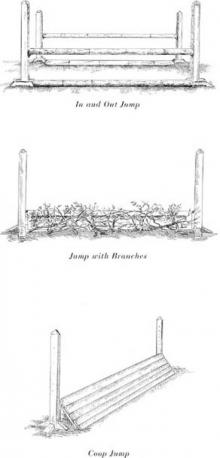 The Georges and the Jewels
The Georges and the Jewels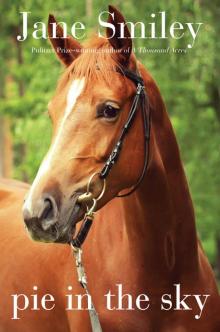 Pie in the Sky: Book Four of the Horses of Oak Valley Ranch
Pie in the Sky: Book Four of the Horses of Oak Valley Ranch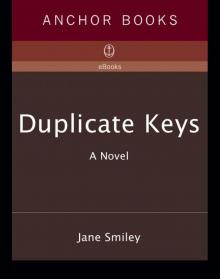 Duplicate Keys
Duplicate Keys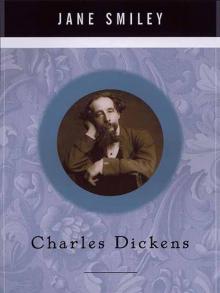 Charles Dickens
Charles Dickens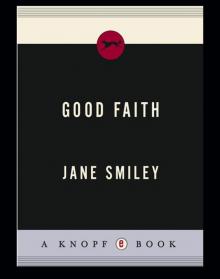 Good Faith
Good Faith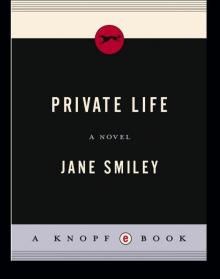 Private Life
Private Life A Thousand Acres: A Novel
A Thousand Acres: A Novel The Greenlanders
The Greenlanders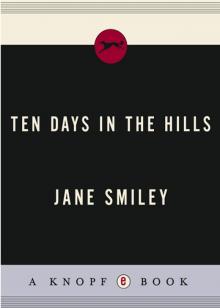 Ten Days in the Hills
Ten Days in the Hills Gee Whiz: Book Five of the Horses of Oak Valley Ranch
Gee Whiz: Book Five of the Horses of Oak Valley Ranch A Thousand Acres
A Thousand Acres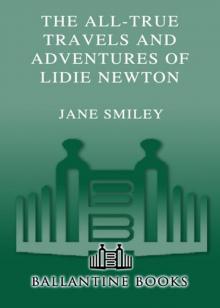 The All-True Travels and Adventures of Lidie Newton
The All-True Travels and Adventures of Lidie Newton Ordinary Love and Good Will
Ordinary Love and Good Will Taking the Reins (An Ellen & Ned Book)
Taking the Reins (An Ellen & Ned Book)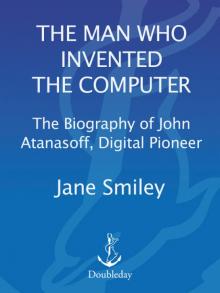 The Man Who Invented the Computer
The Man Who Invented the Computer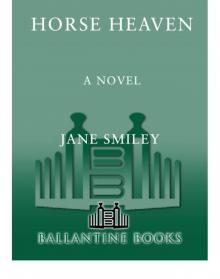 Horse Heaven
Horse Heaven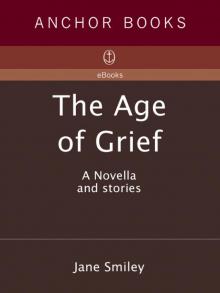 The Age of Grief
The Age of Grief Riding Lessons
Riding Lessons Perestroika in Paris
Perestroika in Paris A Good Horse: Book Two of the Horses of Oak Valley Ranch
A Good Horse: Book Two of the Horses of Oak Valley Ranch Saddles & Secrets (An Ellen & Ned Book)
Saddles & Secrets (An Ellen & Ned Book)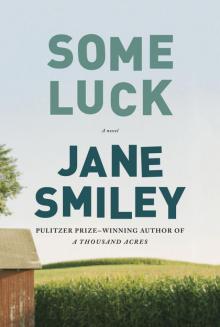 Some Luck: A Novel
Some Luck: A Novel Champion Horse
Champion Horse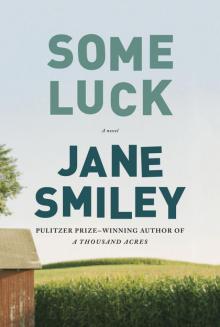 Some Luck
Some Luck Gee Whiz
Gee Whiz Barn Blind
Barn Blind A Thousand Acres (1992 Pulitzer Prize)
A Thousand Acres (1992 Pulitzer Prize)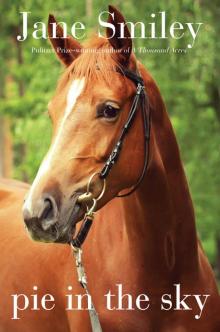 Pie in the Sky
Pie in the Sky True Blue
True Blue A Thousand Acres_A Novel
A Thousand Acres_A Novel A Good Horse
A Good Horse